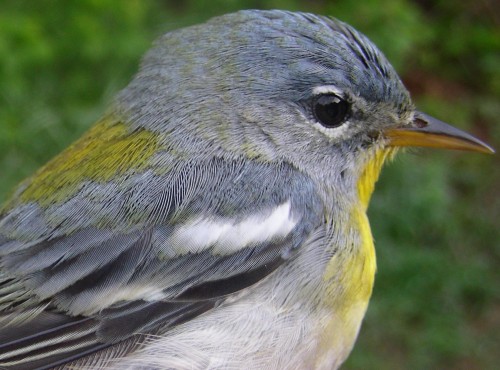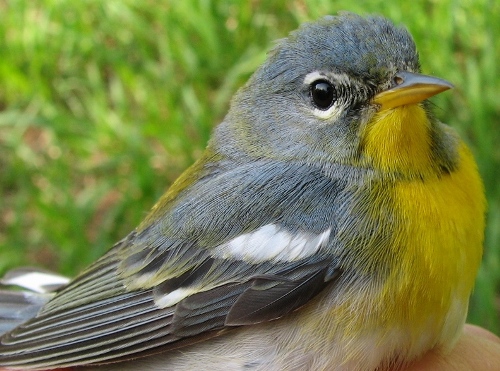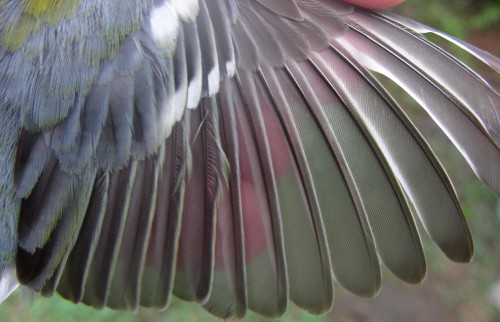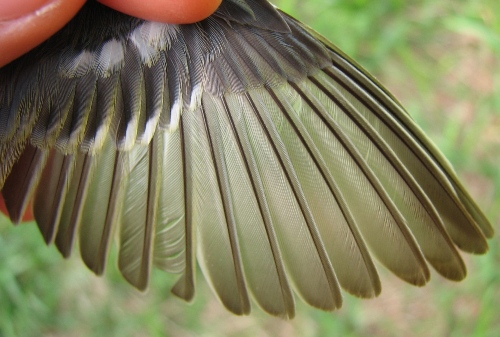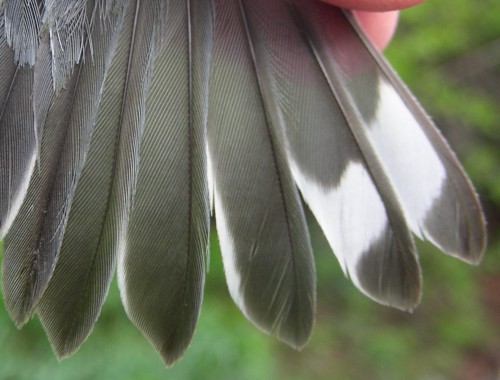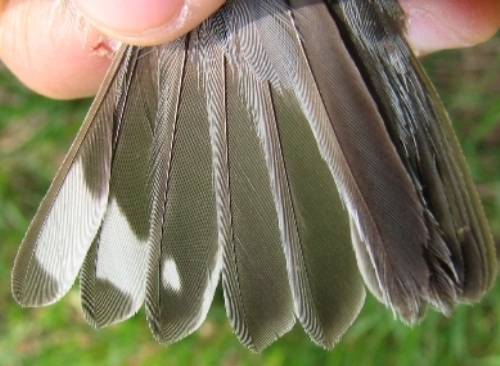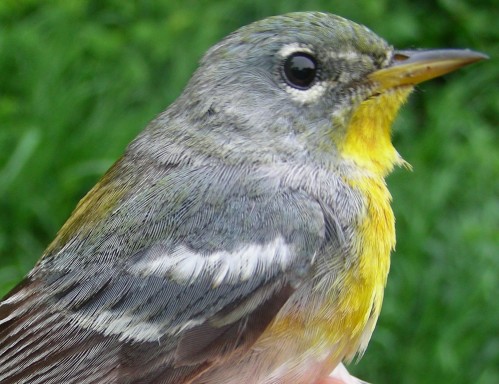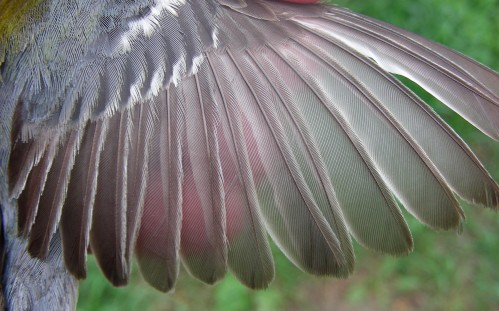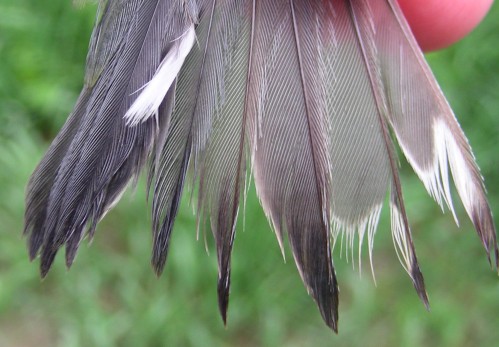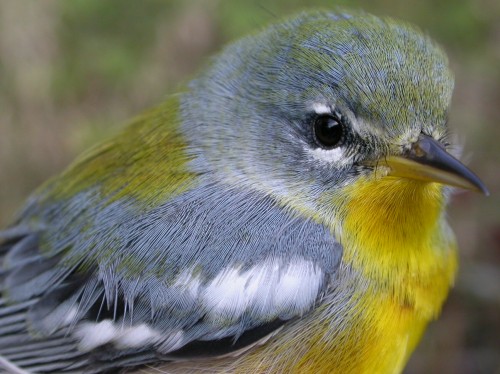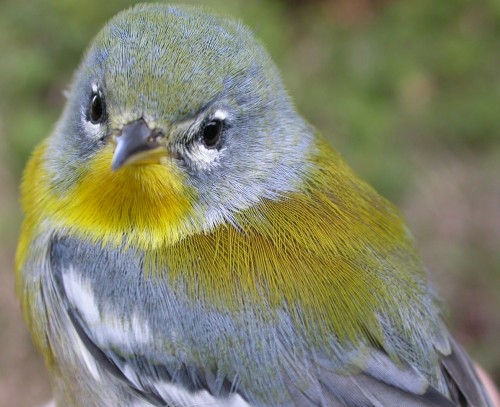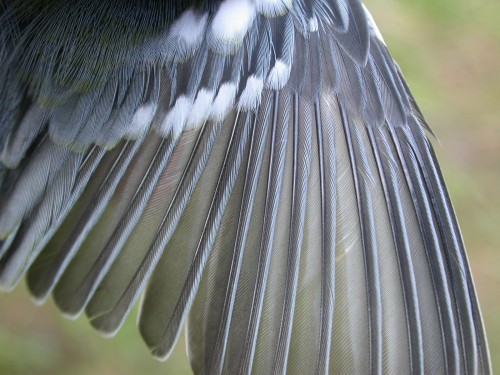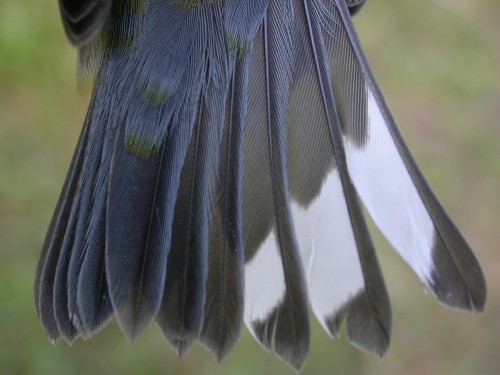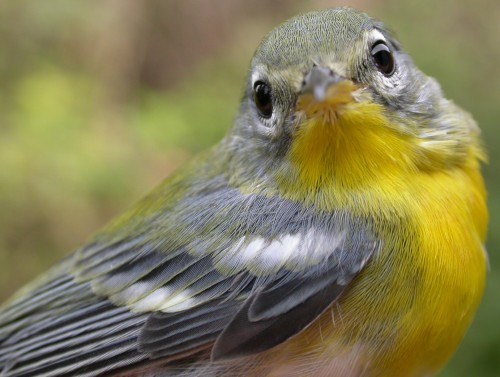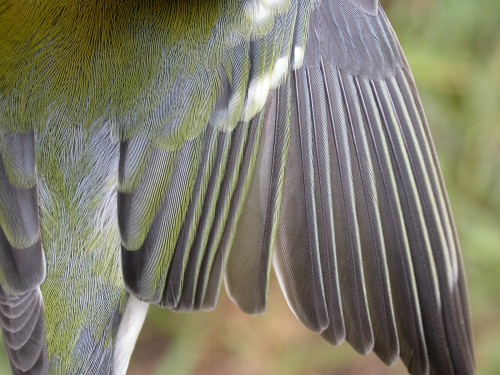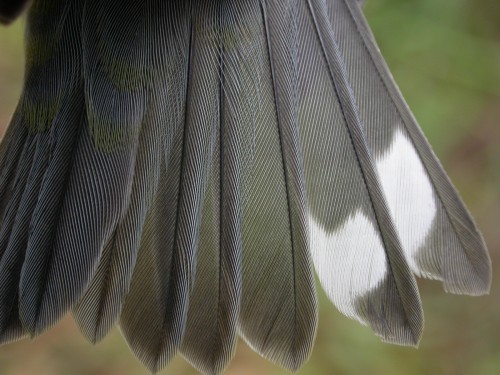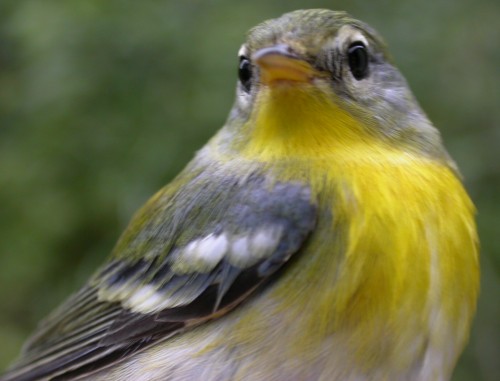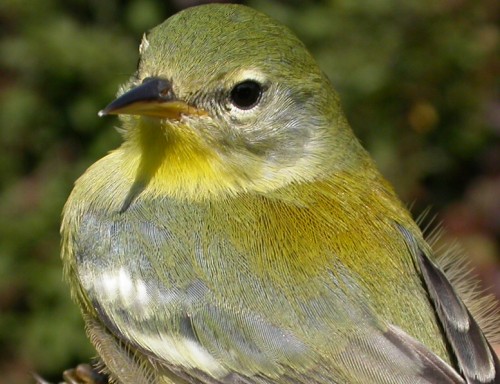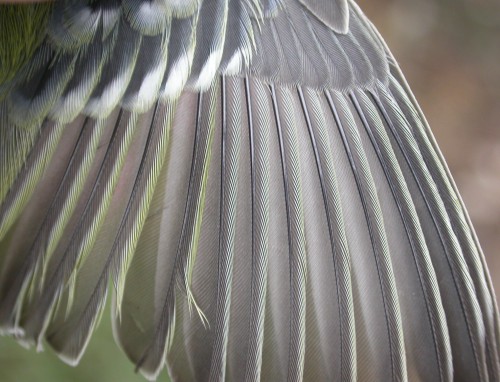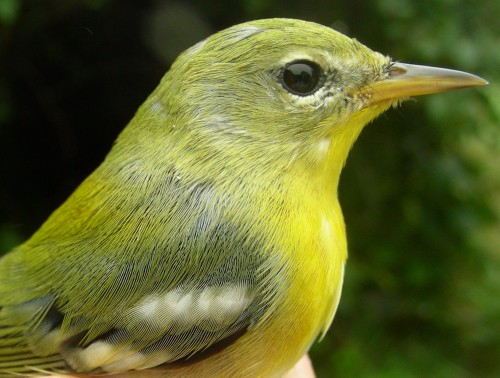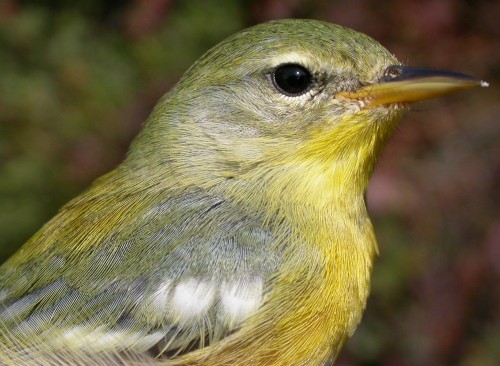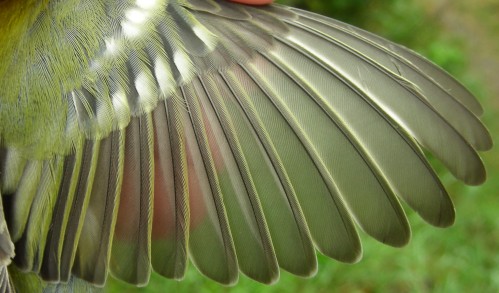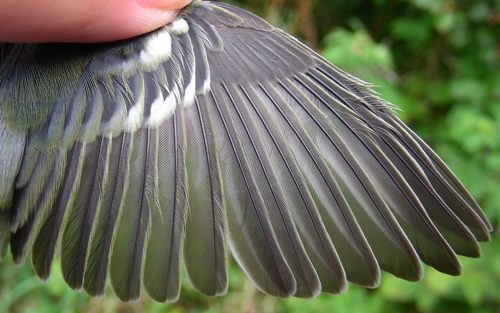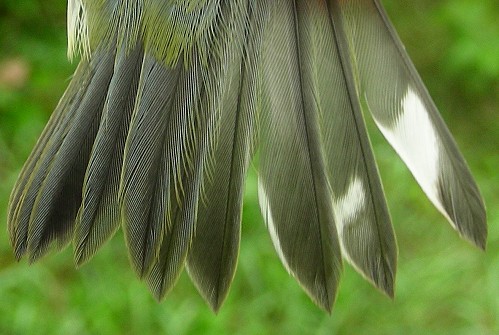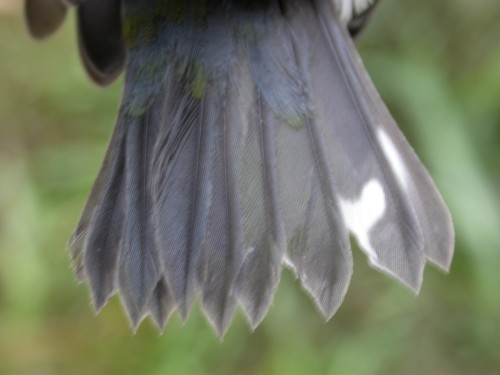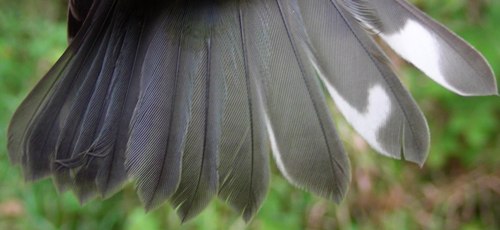|
McGILL BIRD OBSERVATORY |
|||||||||||||||||||||||||||||
NOTE:
This species account has been moved to Piranga to allow for improved comparison
among examples.
Ageing and sexing details:
After-second-year females are somewhat paler than males of the same age and lacking a chestnut breast band. However, they may be similar in overall appearance to hatch-year males; the wing and tail should be examined to confirm identification. The blue edging on the primary coverts may be visible on a perched bird, as in the second photo below, and this can be used to identify it as an after-second-year individual, as second-year birds lack this edging and have noticeably more worn and brownish primary coverts.
Note the overall bluish tone to the wing, and especially the bluish edging to the broad and rounded primary coverts.
The rectrices are broad and fairly rounded, with a moderate amount of white on the outer two feathers, and typically most to all rectrices are in good condition.
Second-year males are somewhat paler and more greenish than older males, but similar in overall appearance to after-hatch-year females; the wing and tail should be examined to confirm identification. Often the brownish and somewhat worn primary coverts are visible on a perched bird, and are a strong indicator that it is second-year.
Note the relatively dull and worn primary coverts, uniform in colour and condition with the primaries and secondaries, but contrasting with the fresher and bluer greater coverts.
The rectrices are typically somewhat narrow, tapered, and worn; the example below appears particularly tattered as a result of being a bit wet.
After-hatch-year males are the most boldly coloured, with upperparts mostly blue, contrasting with the distinct greenish back triangle sometimes tinged with orange, and bold yellow underparts, also sometimes tinged with orange or chestnut but often not.
The wing is particularly useful for ageing and sexing this species. The wing shown below is typical for an after-hatch-year male, with distinct blue edging on primary coverts, and bluish edging also on the primaries and secondaries.
After-hatch-year males have the greatest amount of white on the tail, often extending to r4; all other ages and sexes have white limited to the two outermost rectrices. The rectrices also tend to be quite broad and rounded.
After-hatch-year females are somewhat paler than males of the same age, but similar in overall appearance to hatch-year males; the wing and tail should be examined to confirm identification. Note though that the blue edging on the primary coverts, indicative of an after-hatch-year Northern Parula, can often be seen while the bird is perched, as in the photo below.
The primary coverts of an after-hatch-year female have blue edging, as on males, but note that the feathers are not as dark, and that the edging on the secondaries is more greenish than blue.
The rectrices are broad and rounded, with white patches limited to the outer two rectrices.
Hatch-year males are somewhat paler and more greenish than older males, but similar in overall appearance to after-hatch-year females; the wing and tail should be examined to confirm identification. Note though that the lack of blue edging on the primary coverts, indicative of a hatch-year Northern Parula, can sometimes be seen on a perched bird
The edging on the primary coverts is less distinct than on after-hatch-year birds, but more noticeably, the primary coverts are significantly paler than the blackish greater coverts, and the edging on the primaries and secondaries is greenish.
Tail shape is not the most reliable feature for Northern Parulas, but hatch-year birds do tend to have slightly narrower rectrices that taper to more of a point. White patches are limited to the outer two rectrices.
Hatch-year females are the palest form, usually more greenish above than bluish.
The edging on the primary coverts is less distinct than on after-hatch-year birds, but more noticeably, the primary coverts are significantly paler than the blackish greater coverts, and the edging on the primaries and secondaries is usually more greenish than blue.
Tail shape is not the most reliable feature for Northern Parulas, but hatch-year birds do tend to have slightly narrower rectrices that taper to more of a point, and on some individuals such as the one below where that shape is pronounced, it can be a strong indicator of age. White patches are limited to the outer two rectrices, and the spot on r5 is often particularly small.
|



















